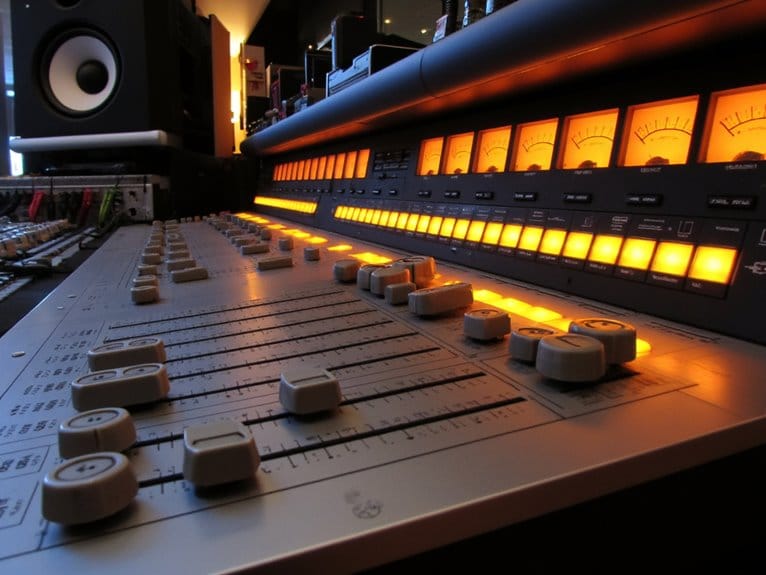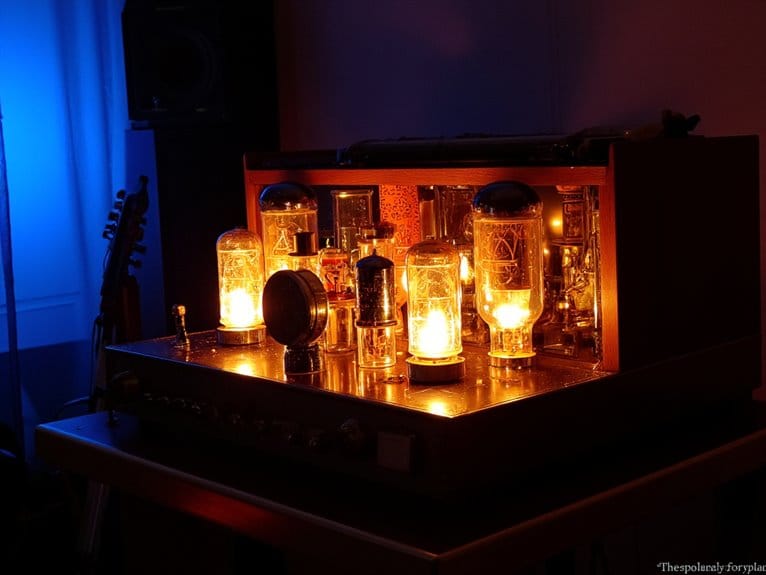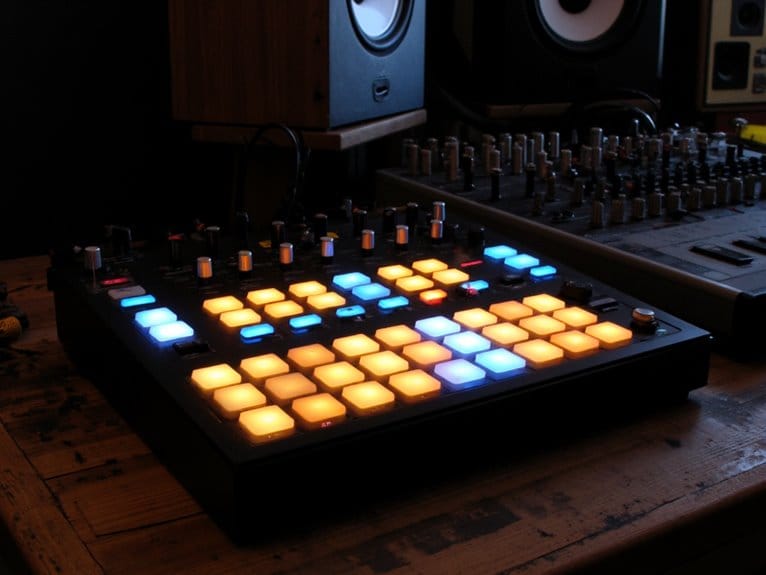What's the Difference Between a 4 String and a 5-String Banjo?
The primary difference between a 4-string and a 5-string banjo lies in their unique string configurations, tunings, and playing styles. The 4-string banjo features a tenor or plectrum configuration, tuned to CGDA or GDAE, producing a brighter, more focused sound. In contrast, the 5-string banjo has a standard configuration, tuned to G, D, G, B, D, generating a deeper, richer tone. These differences impact their sound characteristics, versatility, and suitability for various musical genres. Understanding these distinctions is vital for selecting the right banjo for your specific needs, and exploring these nuances can reveal a world of tone and technique possibilities.
We are supported by our audience. When you purchase through links on our site, we may earn an affiliate commission, at no extra cost for you. Learn more.
History of 4-String Banjos
The 4-string banjo, also known as the tenor banjo, has its roots in the late 19th century, emerging as a distinct variant of the traditional 5-string banjo in the United States. During this period, banjo pioneers such as William B. Fairley and Samuel Swain Stewart experimented with different string configurations, ultimately giving birth to the 4-string tenor banjo. This innovation held significant historical importance, as it allowed for greater versatility and adaptability in various musical genres. The 4-string banjo's unique characteristics enabled it to thrive in jazz, Irish, and other folk music traditions. Its historical significance lies in its ability to bridge the gap between traditional and modern banjo playing styles.
Tuning and String Configuration
Configurations of tuning and string arrangements distinguish 4-string and 5-string banjos, with distinct patterns of notes and intervals employed to produce their unique sonic characteristics. The 4-string banjo typically features a tenor or plectrum configuration, with a shorter string length and heavier gauge strings, tuned to CGDA or GDAE. In contrast, the 5-string banjo typically features a standard configuration, with a longer string length and lighter gauge strings, tuned to G, D, G, B, D.
- Tenor banjos often use shorter string lengths (17-19 frets) to facilitate chordal playing
- Plectrum banjos use slightly longer string lengths (22-24 frets) for melodic playing
- 5-string banjos typically use 26-28 frets for a longer scale length
- Gauge variations between 4-string and 5-string banjos affect string tension and playability
- Different tunings and string configurations enable distinct playing styles and musical genres
Sound Characteristics Compared
How do the distinct tuning and string configurations of 4-string and 5-string banjos impact their respective sound characteristics, particularly in terms of tone, resonance, and overall sonic quality? The 4-string banjo, typically tuned to CGBD, produces a brighter, more focused sound with a clearer attack. This configuration yields a brighter resonance, well-suited for traditional jazz and folk music. In contrast, the 5-string banjo, commonly tuned to GBDG, generates a deeper, richer tone with added tonal warmth. The extra low G string provides a fuller, more complex resonance, making it ideal for bluegrass and country music. These distinct sound characteristics enable players to choose the banjo that best suits their musical style and preferences in relation to.
Playing Style and Techniques
Banjo players adapt their right-hand techniques to accommodate the distinct string arrangements, with 4-string players often employing a more agile, finger-independent approach to navigate the tighter string spacing, whereas 5-string players frequently utilize a stronger, more driving force to produce a fuller sound.
To master the unique demands of each instrument, players must develop specific skills:
- Fingerpicking basics are essential for 4-string banjo, emphasizing dexterity and precision.
- Clawhammer nuances are more prominent on 5-string banjos, requiring a stronger, more rhythmic attack.
- Right-hand position and anchoring vary between the two instruments.
- String skipping and syncopation are more challenging on 4-string banjos due to the narrower string spacing.
- Players often develop distinct thumb leads and index finger roles on each instrument.
Musical Genres and Applications
What role do the 4-string and 5-string banjos play in shaping the distinctive sonic textures of various musical genres, from traditional folk to modern fusion? The 5-string banjo is often associated with traditional Bluegrass and Country music, where its bright, punchy tone and driving rhythm provide the signature Country twang. In contrast, the 4-string banjo is commonly used in Dixieland jazz, Irish, and folk music, where its warmer, more mellow sound and softer attack facilitate a more subtle, nuanced approach. Folk influences are also evident in the 4-string's application in traditional and contemporary folk music, where its warm, intimate tone evokes a sense of authenticity and emotional connection.
Physical Differences and Weight
Differentiating the 4-string and 5-string banjos is a matter of examining their physical characteristics, including neck length, string tension, and body size, which ultimately affect their weight and playing feel. These differences impact the overall playing experience and can influence a player's choice between the two instruments.
Some key physical differences include:
- Neck width: 5-string banjos often have a wider neck to accommodate the extra string.
- Heavier construction: 5-string banjos tend to be heavier due to the additional string and its tension.
- Body size and shape: 5-string banjos may have a slightly larger body to produce a deeper, fuller sound.
- Bridge and tailpiece design: 5-string banjos often feature a more robust bridge and tailpiece to handle the increased string tension.
- Tuning pegs and machine heads: 5-string banjos require a fifth tuning peg and machine head, which can affect the overall weight and balance of the instrument.
Choosing the Right Banjo
Considering the physical characteristics and playing feel of 4-string and 5-string banjos, the next step is to evaluate personal preferences and musical goals to select the ideal instrument for your specific needs. When choosing the right banjo, consider your banjo preferences, such as the type of music you want to play, the sound you want to achieve, and the playing style that suits you best. Your personal style, including fingerpicking or clawhammer techniques, will also influence your decision. If you're a beginner, a 4-string banjo might be a better fit, while experienced players may prefer the versatility of a 5-string. Ultimately, selecting the right banjo will depend on your individual needs and goals.






